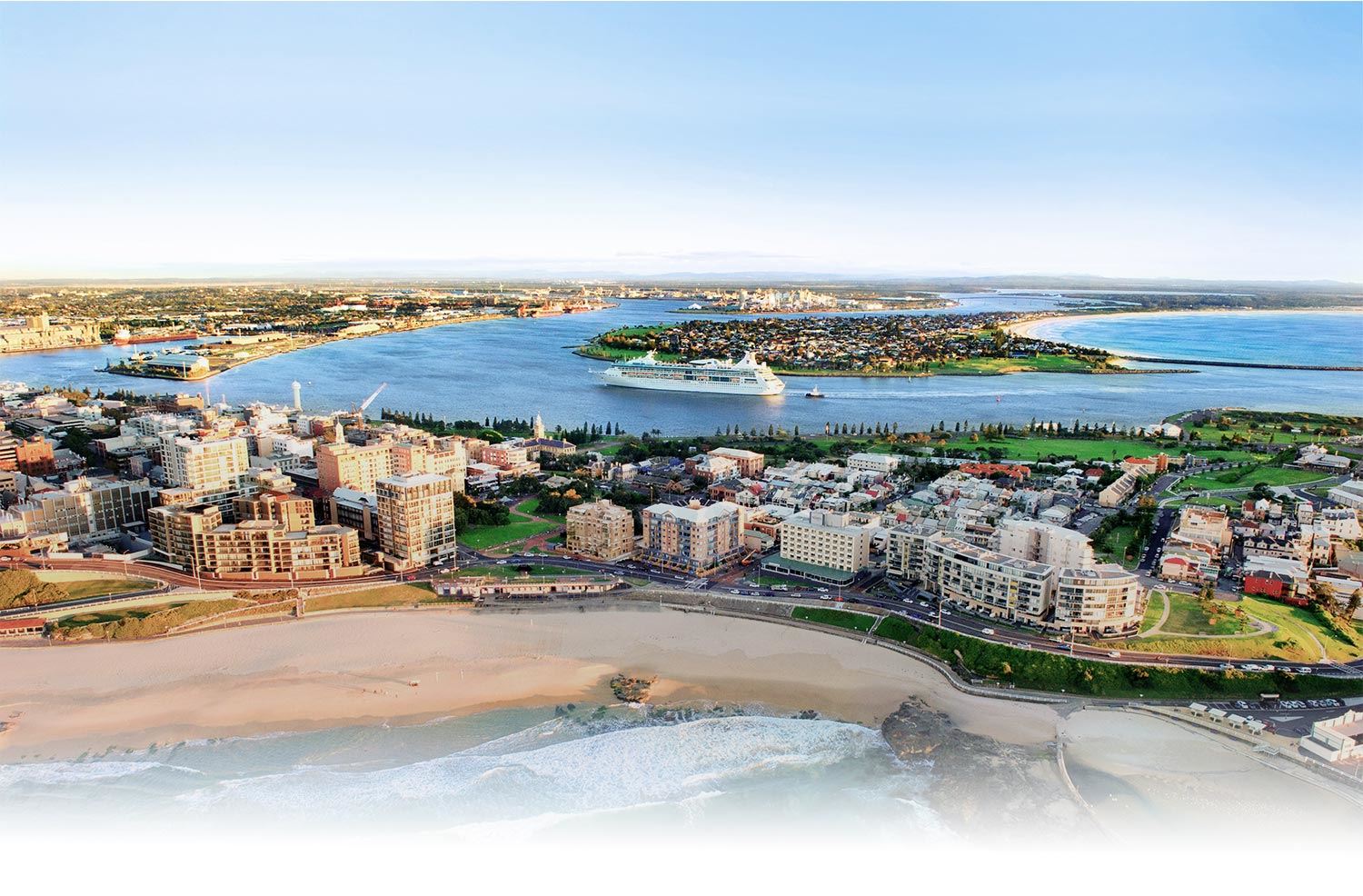
Strategic Planning Documents
These plans and policies are used by us when making decisions on future development. Some policies are prepared by the NSW State Government and can be viewed on their website. We occasionally make changes to our Planning documents and place them on exhibition. Find out what is open and have your say.
Planning Documents
The Department of Planning and Environment exhibited the translation of existing Business and Industrial zones into the new Employment zones from 31 May to 12 July 2022. To view the detail please visit the Department’s Planning Portal. Employment zones will be in place within individual LEPs by 1 December 2022 when the existing Business and Industrial zones will be repealed. Further information is available on the Department's website.
The Local Strategic Planning Statement (LSPS) is our 20-year land use vision and identifies how we will sustainably manage the growth and change of our city. The LSPS gives effect to the Hunter Regional Plan 2036 and Greater Newcastle Metropolitan Plan 2036, implements priorities from our Community Strategic Plan, Newcastle 2040 and brings together land use planning actions in other adopted strategies.
The LSPS will inform changes to the Newcastle Local Environmental Plan 2012, Newcastle Development Control Plan (DCP) and other land use strategies.
The LSPS is accompanied by an LSPS Implementation Plan that identifies a program for the delivery of each of the planning priorities and actions. The Implementation Plan is reviewed every 12 months as actions are completed and to reflect changes in Federal, State or Local priorities as well as resources and budgets.
The Community Participation Plan is a legislative requirement under the Environmental Planning and Assessment Act 1979 (EP&A Act 1979). It covers how and when the City of Newcastle will engage with the community across the planning functions it performs under the EP&A Act 1979. Planning functions include plan making and making decisions on proposed development. Please refer to the plan for revised participation requirements.
The Department of Planning and Environment exhibited the translation of existing Business and Industrial zones into the new Employment zones from 31 May to 12 July 2022. To view the detail please visit the Department’s Planning Portal. Employment zones will be in place within individual LEPs by 1 December 2022 when the existing Business and Industrial zones will be repealed. Further information is available on the Department's website.
City of Newcastle and Port Stephens Council have identified the need for this Strategy to guide development in Fern Bay and North Stockton for the next 20 years.
The strategy area includes land within the City of Newcastle (North Stockton) and Port Stephens (Fern Bay and Fullerton Cove) local government areas.
The structure of the Strategy is:
- Part A provides context for the strategy.
- Part B provides an overview of the goals for the area as informed by community aspirations.
- Part C lists principles to inform future planning when land is rezoned.
- Part D details the outcomes for each of the six precincts in the strategy area with specific actions to achieve the goals.
Key Documents
- Fern Bay and North Stockton Strategy (includes Background Investigations and Implementation Plan)
- Fern Bay and North Stockton Traffic and Transport Study (Seca Solution) which informed transport outcomes
The Heritage Strategy 2020-2030 provides a strategic framework to guide City of Newcastle's management of heritage matters over the next 10 years and ensures we meet our statutory obligations and community expectations for regulating and managing heritage.
The Department of Planning and Environment exhibited the translation of existing Business and Industrial zones into the new Employment zones from 31 May to 12 July 2022. To view the detail please visit the Department’s Planning Portal. Employment zones will be in place within individual LEPs by 1 December 2022 when the existing Business and Industrial zones will be repealed. Further information is available on the Department's website.
The Local Housing Strategy 2020 sets a vision for the provision of housing across the Newcastle Local Government Area over the next 20 years.
The Local Housing Strategy considers housing in the context of affordability, accessibility and sustainability and will inform a future review of the Newcastle Local Environmental Plan 2012 and Newcastle Development Control Plan (DCP).
The Local Housing Strategy:
- provides a history of housing supply and the different eras of housing development in Newcastle
- identifies the key drivers for housing supply and demand
- outlines the 20-year population projections and housing needs for Newcastle
- sets the priorities for the provision of housing for the next 20 years.
Housing Game
Challenge your understanding of our changing city by playing The House we Build, a pilot project with the University of Newcastle.
As the number of people needing houses goes up, low density dwellings will need to be replaced with dwellings that can house more people. It is difficult to house more people in existing neighbourhoods while maintaining amenity or happiness. To maintain happiness community and recreational facilities need to be provided. In the Housing Game, residents’ happiness is reflected in the colour on each tile, the happiness legend is shown in the bottom left-hand side of the screen.
The goal of the game is to house the people moving into the area while achieving the highest global happiness score.
The Employment Lands Strategy was updated by SGS Economics and Planning in 2019 to provide an up-to-date evidence base to inform the new Local Strategic Planning Statement (LSPS). This update will inform the planning of employment generating lands including all land with an industrial, business or special activities zone) in the Newcastle LGA.
The Newcastle Heritage Policy, provides a statement of commitment to the principles of best practice heritage management, and underpins the identification, preservation, conservation, celebration and promotion of our rich cultural heritage.
The plan supports clause 7.9 and 7.9A of Newcastle Local Environmental Plan 2012 and should be read in conjunction with Newcastle Development Control Plan (DCP).
The Community Infrastructure Incentives in Wickham planning proposal was finalised on 14 December 2023. This planning proposal was endorsed by Council at the August 2023 Ordinary Council Meeting. The Wickham Community Infrastructure Plan and DCP amendment were also adopted at this meeting. These documents did not come into effect until the planning proposal was finalised.
Please note that the incentive GFA rate of $519.10 per square metre of additional residential floor space is subject to indexation from when it was endorsed by Council, being March 2022. The incentive GFA rate for the September 2023 Quarter is $579.72.
The Wickham Masterplan sets the 'Vision' of how Wickham may redevelop from a post-industrial suburb at the fringe into a mixed-use urban neighbourhood supporting the emerging commercial core of the Newcastle City Centre in Newcastle West.
Council adopted the Wickham Masterplan 2017 on 28 November 2017
Following ongoing monitoring and review of its implementation, identification of further challenges, and engagement with the local community the City of Newcastle prepared the Wickham Masterplan 2021 Update, which Council adopted on 28 September 2021.
Council adopted an amendment to the Wickham Masterplan 2021 Update on 26 July 2022. The amendment involved minor changes to the areas proposed for development incentives and the corresponding controls that apply in these areas. This version will replace the existing Wickham Masterplan 2021 Update.
The Greater Newcastle Metropolitan Plan 2036 was launched in 2018 by the Minister for Planning Anthony Roberts MP. The Plan sets out strategies and actions across Cessnock, Lake Macquarie, Maitland, Newcastle and Port Stephens Local Government Areas, which together make up Greater Newcastle. The plan accompanies the vision set in the Hunter Regional Plan 2036.
The plan's vision sees Greater Newcastle as an emerging economic and lifestyle city, with outcomes focused on a skilled workforce, environmental resilience, diverse housing and improved connections.
The Hunter Regional Plan 2041 provides a strategic framework for the region, to facilitate the region’s ongoing prosperity. It is a 20-year vision for the region, prepared under section 3.3 of the Environmental Planning and Assessment Act 1979. It provides direction when responding to community needs for housing, jobs, infrastructure, a healthy environment, connected communities and access to green spaces.











